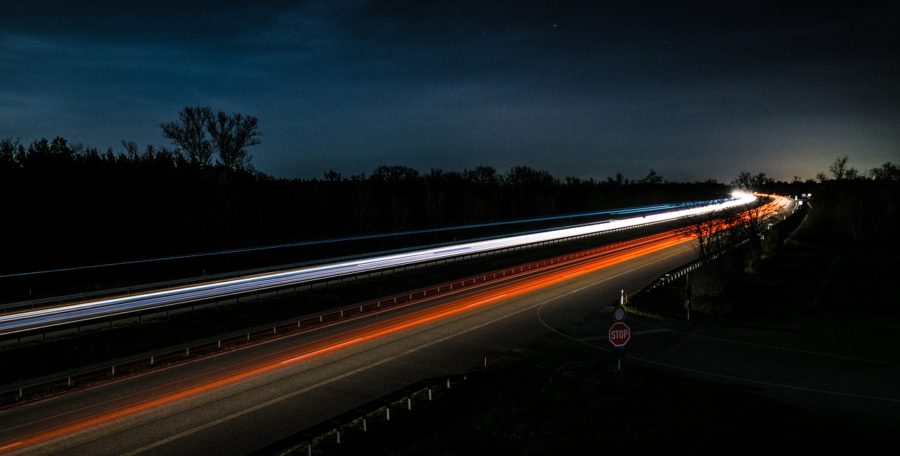Driving at night can be dangerous. As we’ve previously pointed out, no matter how well you might think you know a road, it may pose a completely new set of challenges in the dark.

If you’re a learner, or a new driver, it might take you a while to get accustomed to driving at night. These checks and tips will make driving in the dark as safe as possible for you, your passengers, and for other motorists.
Driving at Night – Essential Checks Before You Set Out
- Plan your journey in advance, taking care to stick to major roads wherever possible. Major roads are generally easier to navigate, and they’re much more likely to be well-lit.
- Allow more time for your journey. This way you won’t be driving under pressure, so you’ll be less tempted to speed and better able to take your time.
- Check that all of your lights are clean and in full working order. That means front and rear lights, including your high beams.
- Make sure all of your windows are clean to avoid glare and condensation.
Driving at Night – A Few Things to Keep in Mind
- Be aware of pedestrians wandering into the road out of pubs and clubs, especially around closing time. Be particularly vigilant when it comes to cyclists – not all of them will be wearing reflective clothing, helmets or other safety equipment.
- No matter how carefully you drive, your fellow motorists might drive a bit more erratically so keep a greater distance between you and the car in front than you would during the day.
- Try to keep your speed as steady as possible. Avoid the temptation to reduce your speed when there is oncoming traffic as this might confuse drivers behind you.
- Get regular eye tests to check for any conditions that could potentially affect your night vision.
- If you can, dim your dashboard lights and turn off all interior lights to reduce internal reflections and glare.
- If you’re new to driving, and not yet fully confident on the roads, refrain from listening to music when driving at night as it may affect your concentration.
- You should certainly not talk on or use your mobile for any other purpose, not even on hands-free.
- If you’re travelling a long distance, take a break every two hours. Stop to have a drink, something to eat and rest for a short while before continuing your journey.
Driving at Night – Don’t Dazzle Other Drivers!
To make it as easy as possible for other drivers to see you, turn your headlights on an hour before sunset and keep them on until an hour after sunrise if driving early in the morning. This way, you’ll be visible even in the twilight and the dawn.
If you’re driving on country roads, switch to full beam. But to avoid dazzling other drivers, dip your lights when you see other cars approaching. Be on the lookout for signs of oncoming traffic, such as glimmers of light at bends and at the top of hills.
If an oncoming driver dazzles you, stay calm and avoid looking straight into their headlights.
Get Plenty of Practice In
Learner drivers are not currently permitted to drive unaccompanied at night. But you will never get accustomed to night driving unless you’re able to practice.
Ask your driving instructor if you can book some lessons for when it is dark to help build your confidence and give you experience of night-time driving.. To build up some additional experience, you can also ask your parents, or any more experienced drivers, to accompany you on a night drive. Though in any case, make sure your learner car insurance is sorted, so that you’ll be covered in the event of a collision.



